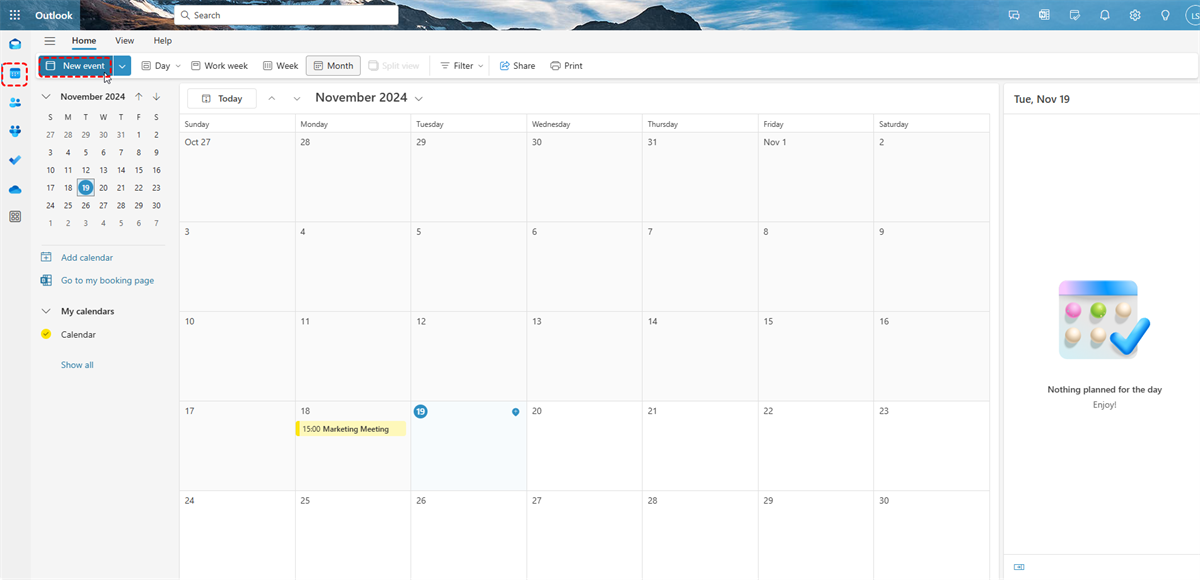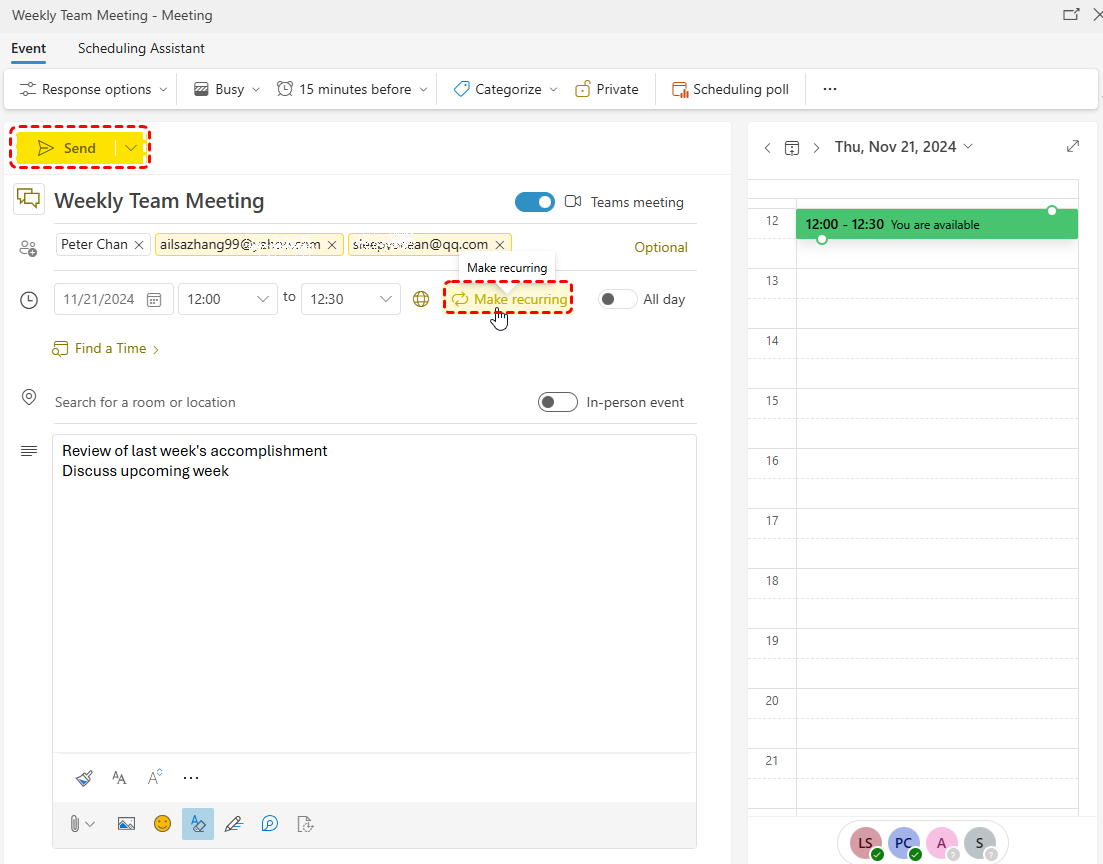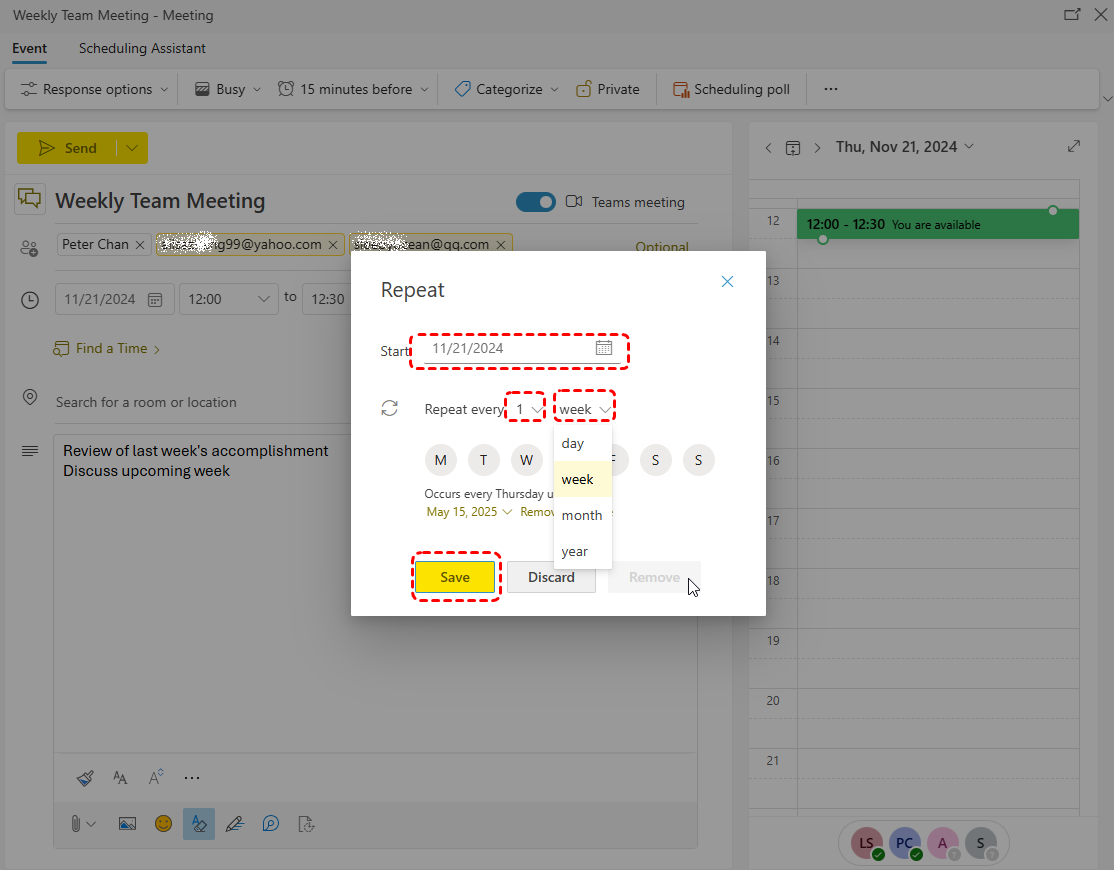This guide explains how to set up recurring meetings in Outlook and covers the process of setting up automatic recurring meetings in Outlook, making scheduling efficient and stress-free.

Recurring meetings are a fundamental tool for maintaining consistency and productivity in our increasingly busy schedules. They provide a structured approach to regular check-ins, team collaborations, and project updates. By automating the scheduling process, recurring meetings eliminate the need for manual scheduling, saving time and reducing the risk of scheduling conflicts.
Step 1. Create a New Meeting: Open Outlook and initiate a new meeting by clicking on "Calendar"- > "New Event."

Step2. Set Meeting Details: Define the subject, start time, end time, and add attendees.

Step 3. Recur Meeting: Click on "Make recurring" button.
Step 4. Choose desired frequency: Choose the desired frequency (daily, weekly, monthly, yearly).

Step 5. Save the recurring meeting: After fine-tuning the recurrence pattern. Click on "Save" and then "Send" to invite the attendees.
For individuals with demanding schedules, efficient recurring meeting management is crucial. Here are some tips to optimize your process:
Batch Scheduling
Instead of setting up recurring meetings one by one, batch-schedule multiple recurring events at once. This approach not only saves time but also ensures that your schedule is well-organized. Use Outlook’s advanced scheduling options to create consistent patterns for meetings, such as weekly team updates or monthly reviews.
Meeting Templates
Utilize recurring meeting templates to simplify the setup process. Create pre-defined templates with standard details such as meeting agendas, participants, and durations. These templates can be customized as needed and reused, reducing repetitive tasks while ensuring consistency across meetings.
Reminders
Set automatic reminders to prepare for and participate in recurring meetings. Outlook allows you to customize reminders for different timeframes, ensuring you have sufficient time to gather necessary materials or review agendas before the meeting begins.
Review and Update
Regularly review and update your recurring meeting schedules to keep them relevant and conflict-free. For example, if team priorities shift or new projects arise, adjust the meeting recurrence patterns to align with current goals. This proactive approach minimizes scheduling conflicts and ensures meetings remain productive and necessary.
This article addresses the question “how to set up recurring meetings in Outlook?”. If you’re considering backing up your Outlook, MultCloud can be extremely useful. Trusted by over 3 million users, MultCloud is a multi-cloud management tool that facilitates the transfer or synchronization of files between various cloud services.
For instance, you can save your Outlook emails as PDFs to your computer or cloud drives, such as Google Drive, OneDrive, or Dropbox, in bulk. MultCloud also enables you to access and manage all your cloud or Email accounts via a single application. Currently, it supports more than 30 different cloud services, including Google Drive, OneDrive, Dropbox, Box, Google Photos, iCloud Photos, FTP, WebDav, and more.